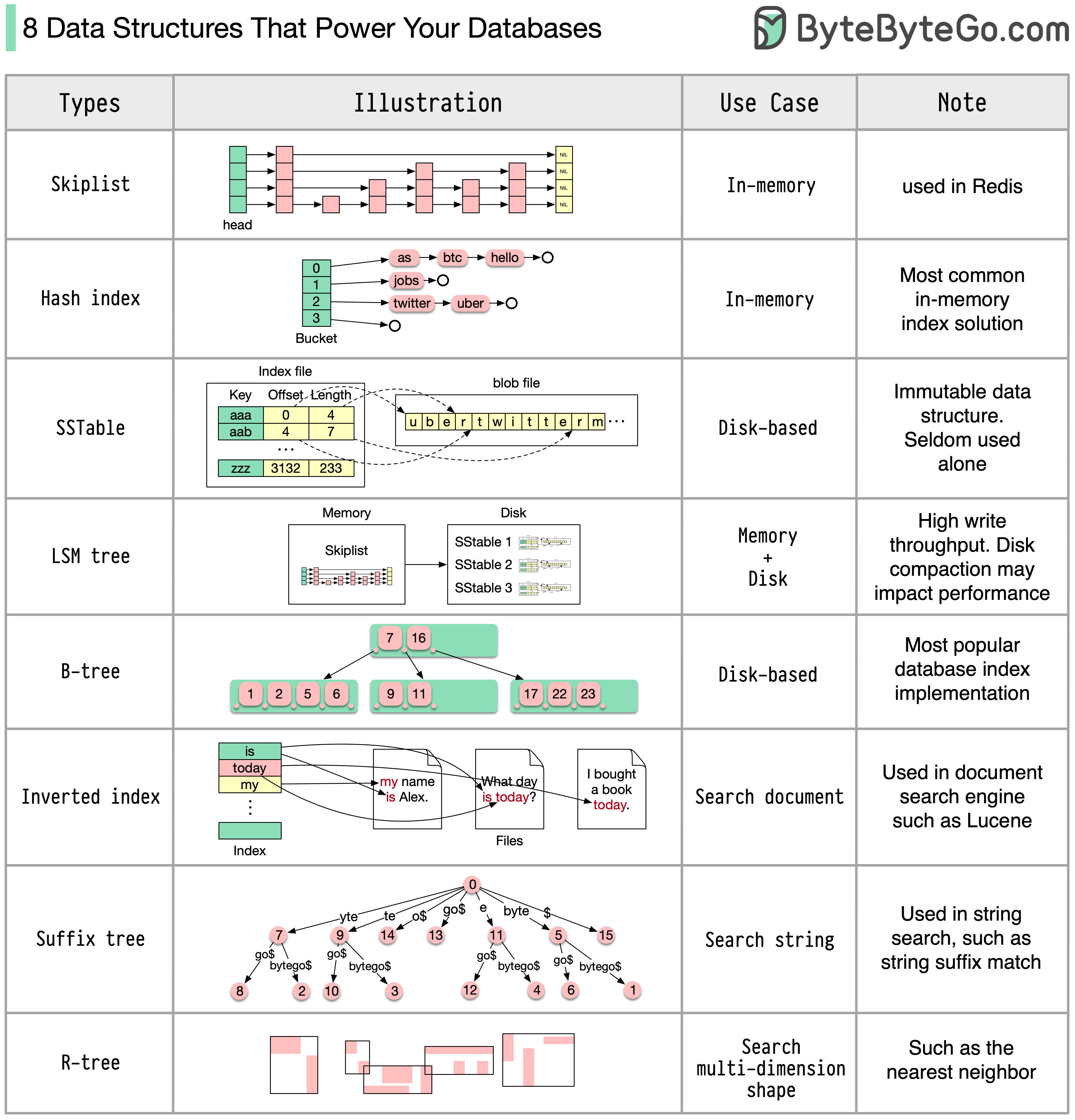Explore 8 key data structures that drive database efficiency.

The answer will vary depending on your use case. Data can be indexed in memory or on disk. Similarly, data formats vary, such as numbers, strings, geographic coordinates, etc. The system might be write-heavy or read-heavy. All of these factors affect your choice of database index format.
The following are some of the most popular data structures used for indexing data:
Skiplist: a common in-memory index type. Used in Redis
Hash index: a very common implementation of the “Map” data structure (or “Collection”)
SSTable: immutable on-disk “Map” implementation
LSM tree: Skiplist + SSTable. High write throughput
B-tree: disk-based solution. Consistent read/write performance
Inverted index: used for document indexing. Used in Lucene
Suffix tree: for string pattern search
R-tree: multi-dimension search, such as finding the nearest neighbor
This is not an exhaustive list of all database index types.